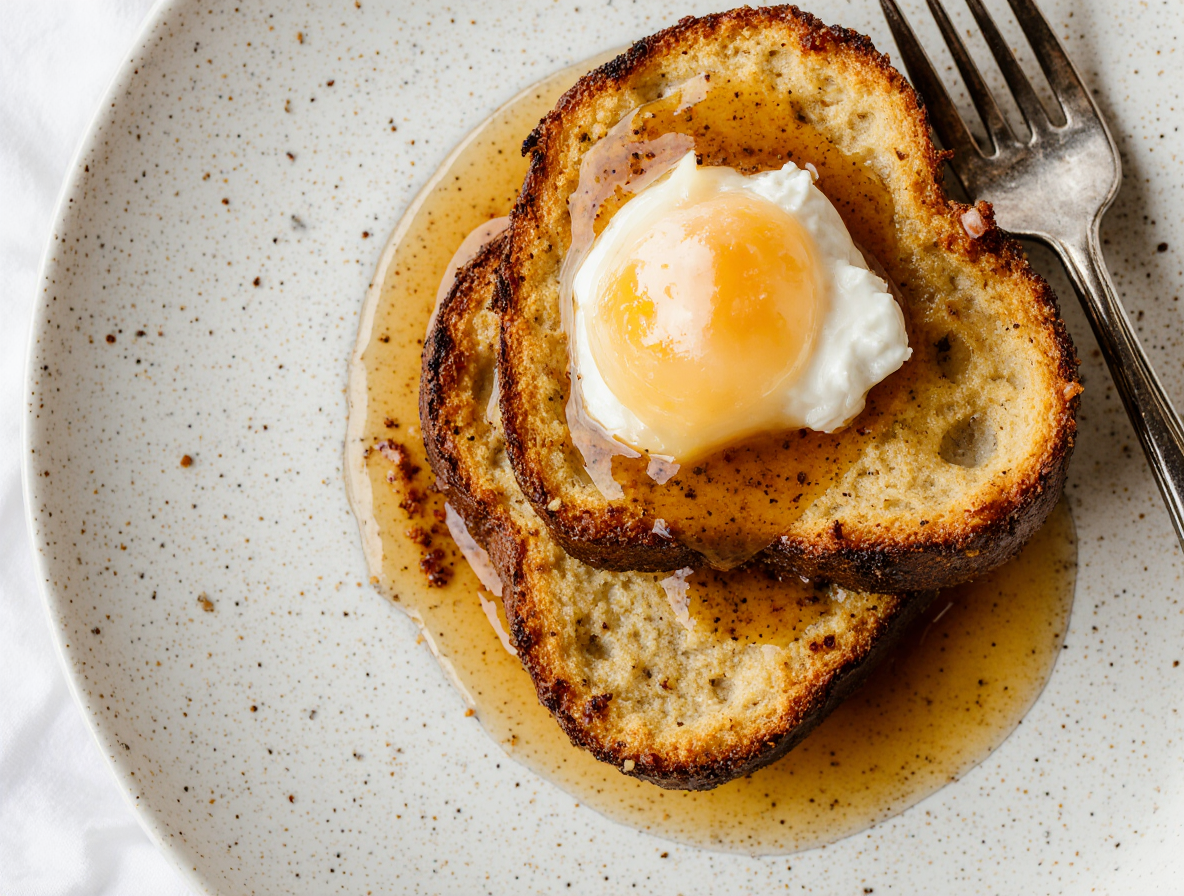Foolproof French Toast Recipe: Never Fail Classic Method
French toast recipe perfection starts with a delightful contrast of textures—crisp on the outside, yet perfectly soft and tender on the inside. Despite its fancy restaurant appearance, this breakfast favorite doesn’t require culinary school training to master.
We’ve all experienced disappointing French toast—soggy centers, burnt edges, or bland flavor. However, with the right techniques, this quick and easy french toast recipe transforms simple ingredients into a warm, indulgent treat that feels like a hug on a plate. Throughout this guide, I’ll share my foolproof method for classic French toast, specifically addressing common mistakes that lead to less-than-stellar results. From selecting the ideal bread thickness (aim for about ¾ to 1 inch thick slices) to determining the perfect egg-to-milk ratio, we’ll cover every essential step to ensure your basic French toast recipe turns out beautifully every time. Furthermore, I’ll reveal why a secret ingredient—all-purpose flour—might be the game-changer your simple French toast recipe needs.
Choosing the Right Bread for French Toast
The foundation of any classic french toast recipe begins with selecting the right bread. Your choice of bread can make the difference between soggy disappointment and breakfast perfection.
Best types of bread to use
When searching for the ideal base for your easy french toast recipe, look no further than these top performers:
Brioche stands out as the premier choice. Its rich butter and egg content creates a plush, tender texture that beautifully absorbs the custard while maintaining structural integrity. The bread’s inherent sweetness and buttery flavor elevate your french toast to restaurant quality.
Challah ranks as another excellent option. Similar to brioche but made without butter, this Jewish bread offers a slightly denser texture with wonderful elasticity. Its eggy composition makes it particularly well-suited for soaking up your french toast batter.
Sourdough brings something different to your basic french toast recipe. Its natural tanginess adds complexity to counter the sweetness, while its sturdy structure holds up exceptionally well during soaking and cooking. For those who prefer french toast with more character, sourdough delivers.
French bread or artisanal loaves work wonderfully too. Their crisp crusts and thick crumb provide the perfect canvas for absorption without falling apart. Additionally, thick-cut white sandwich bread (like Texas toast) offers a more traditional approach that still yields excellent results.
Why stale bread works better
Stale bread isn’t just acceptable for french toast—it’s actually preferable! In fact, the French term “pain perdu” (lost bread) reveals the dish’s origins as a way to rescue day-old bread.
Day-old bread absorbs more of the egg mixture without breaking apart. Fresh bread, especially softer varieties, tends to become waterlogged and fall apart when soaked. Consequently, slightly dried bread delivers that golden-brown exterior while maintaining a custardy center.
For optimal results, you can either use naturally stale bread or create “controlled staleness” by oven-drying fresh slices. This technique dehydrates the bread while preserving its fresh taste.
Bread thickness and texture tips
Above all, thickness matters tremendously. The ideal slice for a simple french toast recipe measures between 3/4″ to 1″ thick. Anything thinner risks falling apart during soaking, while overly thick slices might remain raw in the center.
Cut your bread uniformly to ensure even cooking. If using artisanal loaves, aim for consistent thickness rather than identical shapes.
When selecting bread, prioritize sturdiness and structure. The bread must withstand soaking without disintegrating yet remain porous enough to absorb the custard mixture. Generally, avoid basic white sandwich bread as it’s typically too thin and flimsy for a proper french toast recipe.
Making the Perfect Custard Mixture
The custard mixture forms the heart and soul of any classic french toast recipe. This creamy bath infuses your bread with rich flavor while creating that signature custardy interior we all crave.
Basic custard ingredients
The foundation of a proper french toast custard relies on just a few key components:
- Eggs – They provide structure, richness, and help the custard set properly
- Milk or cream – Adds moisture and creaminess to the mixture
- Sweetener – Usually sugar, which helps create caramelization
- Flavorings – Vanilla extract and spices bring depth
Some recipes also incorporate flour as a secret ingredient to create more of a “batter,” which yields extra fluffy results and prevents sogginess.
Ideal egg-to-milk ratio
Finding the perfect balance between eggs and milk is crucial for a foolproof french toast recipe. Most experts recommend using:
Two to four eggs per cup of milk represents the typical range. For a richer custard in your basic french toast recipe, use the higher end of this spectrum.
Another reliable formula is 2 eggs to ¾-cup of milk. Alternatively, some chefs swear by 4 eggs for 1 cup of milk for maximum fluffiness.
The type of dairy also matters significantly. While whole milk works perfectly for everyday easy french toast recipes, half-and-half creates a thicker custard, and heavy cream delivers the most luxurious result—though it can sometimes leave a slightly greasy mouthfeel.
Flavor boosters: vanilla, cinnamon, nutmeg
Vanilla extract serves as the foundation flavor, enhancing other ingredients rather than dominating. For a simple french toast recipe, add 1-2 teaspoons per batch.
Cinnamon brings warmth and comfort, becoming practically synonymous with classic french toast recipes. Nutmeg complements cinnamon beautifully, though use it more sparingly—about ¼ teaspoon per batch.
For additional complexity, consider cardamom, orange zest, or even a splash of liqueur.
Common custard mistakes to avoid
First, ensure thorough whisking—unmixed eggy bits will create an uneven texture. Some chefs even recommend straining the custard for ultimate smoothness.
Moreover, avoid excess dairy, which prevents proper cooking and leads to soggy results. Conversely, insufficient soaking time (aim for 15-20 seconds minimum) prevents the bread from absorbing enough custard.
Finally, remember that french toast isn’t steak—cooking at too high a temperature will burn the sugar in your custard before the inside cooks properly.
Cooking Techniques for Foolproof Results
Mastering the cooking process transforms a simple french toast recipe into something extraordinary. After preparing your bread and custard, the final execution makes all the difference between mediocre and magnificent results.
Pan type and heat level
Selecting the right cooking surface is crucial for a classic french toast recipe. I prefer using:
- A well-seasoned cast-iron skillet for excellent heat distribution
- A high-quality non-stick pan for easier flipping
- An electric griddle set to 350°F for consistent results when cooking multiple slices
Temperature control is essential in any french toast recipe. Set your stovetop to medium or slightly below medium heat. This might seem too low initially, yet it’s perfect since the sugar in your custard can burn quickly at higher temperatures. Too hot, and you’ll end up with a burnt exterior and raw center; too cool, and your bread will dry out before developing that golden crust.
How long to soak the bread
Soaking time varies depending on your bread choice. For fresh bread, a 10-second dip on each side typically suffices. Day-old bread requires 20-30 seconds per side. Thicker artisanal breads benefit from longer soaking—about 15-20 minutes for the custard to penetrate properly.
The goal is bread that’s saturated without falling apart. Press gently to help absorption without destroying the structure. When lifted, the bread should hold its shape yet feel heavy with custard.
Flipping and browning tips
Once your pan is preheated, add butter—about a teaspoon per slice. Some chefs recommend combining butter with a neutral oil to prevent burning. The surface is ready when a water droplet sizzles on contact.
Cook each slice for approximately 3 minutes on the first side until golden brown. The second side typically needs less time—about 2 minutes. Flip only once for best results.
Keeping slices warm for serving
To maintain that perfect texture until serving, preheat your oven to 200°F or 375°F depending on your preference for softer or crisper results. Arrange finished slices in a single layer on a parchment-lined baking sheet or cooling rack in the oven.
Alternatively, Alton Brown’s method uses two baking racks—one preheated in the oven while the other holds freshly cooked slices before transferring them to the warm rack. This technique keeps the exterior crisp while preventing sogginess.
Creative Variations and Toppings
Once you’ve mastered the basic french toast recipe, it’s time to explore creative twists that transform this breakfast staple into something extraordinary. From unexpected fillings to texture-enhancing coatings, the possibilities are virtually endless.
Stuffed French toast ideas
Elevate your classic french toast recipe by creating delicious stuffed versions. Combine cream cheese with fresh berries, jam, or maple syrup for a sweet filling that melts beautifully between warm slices. For more decadence, try cream cheese mixed with Nutella or peanut butter. Alternatively, explore savory options by stuffing your french toast with crumbled bacon, breakfast sausage, or parmesan cheese. The key is ensuring your bread is thick enough to accommodate the filling without falling apart.
Crunchy coatings and crispy finishes
For french toast with irresistible texture, coat your egg-dipped slices in crushed cereals prior to cooking. Cornflakes are particularly effective, adding exceptional crunchiness that completely enhances the french toast experience. After soaking bread in the egg mixture, dredge thoroughly in crushed cereal, then cook as usual. Some chefs recommend baking cereal-coated french toast at 400°F for 10 minutes on each side instead of pan-frying. Graham cracker crumbs and Rice Krispies offer equally delightful alternatives for crunchy finishes.
Sweet and savory topping combinations
Traditional maple syrup and powdered sugar are just the beginning. Sweet toppings worth trying include:
- Fresh berries with whipped cream
- Banana slices with honey and cinnamon
- Chocolate-hazelnut spread with strawberries
- Cinnamon-sugar with apple butter
Correspondingly, savory options have gained popularity—try topping french toast with poached eggs, roasted cherry tomatoes, smashed avocado, or crispy bacon. Even unexpected combinations like french toast with bacon and maple syrup create perfect sweet-savory balance.
Make-ahead and freezer tips
Prepare french toast ahead of time to simplify busy mornings. Thereafter, once cooked and cooled, place slices on a parchment-lined baking sheet and freeze individually for 30-40 minutes before transferring to freezer bags. This prevents sticking and allows you to grab single slices as needed. Frozen french toast remains good for up to 3 months and can be reheated multiple ways:
- Microwave for quick results
- Toaster for crispy edges
- Oven (350°F for 7 minutes) for even warming
- Air fryer (350°F for 4 minutes) for optimal crispiness
Conclusion
French toast stands as one of those deceptively simple dishes that rewards attention to detail. Throughout this guide, we’ve explored every aspect of creating foolproof results. Selecting the right bread undoubtedly forms the foundation of success – whether you choose rich brioche, eggy challah, or tangy sourdough. Day-old bread absorbs custard beautifully without falling apart, making yesterday’s loaf perfect for tomorrow’s breakfast.
The custard mixture itself requires balance. Too many eggs creates a rubbery texture, while excess milk leads to soggy results. Additionally, vanilla, cinnamon, and a hint of nutmeg transform basic ingredients into something truly special. That secret sprinkle of flour might surprise you, but it certainly helps create that perfect texture we all crave.
Cooking technique matters just as much as ingredients. Medium heat allows for thorough cooking without burning, while proper soaking ensures complete custard absorption. After mastering the basics, you can certainly explore creative variations – stuffed versions, crunchy coatings, or unexpected toppings take this breakfast classic to new heights.
French toast has survived centuries because it combines simplicity with endless possibilities. The basic method remains accessible to anyone, regardless of cooking experience. Most importantly, these techniques ensure consistent results every time. Armed with these tips, you’ll never suffer through soggy, bland French toast again. Instead, each golden-brown slice will deliver that perfect contrast of textures and flavors that makes this dish a timeless favorite at breakfast tables everywhere.
FAQs
Q1. What’s the best type of bread for French toast? Brioche is considered the top choice for French toast due to its rich butter and egg content. Other excellent options include challah, sourdough, and thick-cut French bread. The ideal bread should be sturdy enough to withstand soaking without falling apart.
Q2. Why is stale bread recommended for French toast? Stale bread works better for French toast because it absorbs more of the egg mixture without breaking apart. Day-old bread helps achieve a golden-brown exterior while maintaining a custardy center. If you don’t have stale bread, you can create “controlled staleness” by oven-drying fresh slices.
Q3. What’s the ideal egg-to-milk ratio for French toast custard? A common ratio is 2 to 4 eggs per cup of milk. For a richer custard, use the higher end of this range. Another reliable formula is 2 eggs to ¾-cup of milk. The type of dairy also matters; whole milk works well for everyday recipes, while half-and-half or heavy cream creates a more luxurious result.
Q4. How long should I soak the bread for French toast? Soaking time depends on the bread type. For fresh bread, a 10-second dip on each side is usually sufficient. Day-old bread requires 20-30 seconds per side. Thicker artisanal breads benefit from longer soaking, about 15-20 minutes, to allow proper custard penetration.
Q5. What are some creative toppings for French toast beyond syrup? While maple syrup is classic, there are many delicious alternatives. Try fresh berries with whipped cream, banana slices with honey and cinnamon, or chocolate-hazelnut spread with strawberries. For a savory twist, top your French toast with poached eggs, roasted cherry tomatoes, or crispy bacon.


